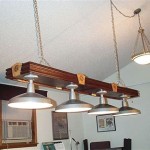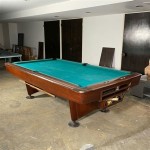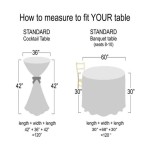What Is A High Table Called?
The term "high table" typically refers to a specific type of dining arrangement that holds considerable significance in academic and institutional settings, particularly within British universities and colleges, and sometimes in older schools. It represents more than just a place to eat; it symbolizes tradition, hierarchy, and a sense of community among senior members of an institution. While the term "high table" is the most commonly recognized, other terms and phrases are sometimes used, often informally or within specific communities, to describe or allude to this dining practice. Understanding the nuances surrounding the high table requires exploring its history, its associated terminologies, and the cultural context in which it exists.
The high table, in its most literal sense, is a table that is physically elevated above the main dining hall. This elevation, even if just a few inches, serves to visually distinguish the high table from the other tables occupied by students or junior members. Historically, this elevation emphasized the authority and status of those seated at the high table. The tradition originated in medieval monasteries and colleges, where the abbot or master and other senior figures would dine separately from the rest of the community.
Over time, the custom evolved, becoming a fixture in Oxford and Cambridge universities, as well as other collegiate institutions. The high table became associated with formality, tradition, and academic excellence. It is a place where fellows, professors, and distinguished guests could dine together, engage in intellectual discourse, and maintain the traditions of the institution. The specific rituals and customs surrounding high table vary from institution to institution, but the underlying principles remain consistent.
The individuals who are typically invited to dine at high table usually include the college master or principal, fellows, senior academic staff, visiting professors, honorary fellows, and distinguished alumni. In some cases, particularly deserving students may also be invited as a special honor. The atmosphere is often formal, with specific dress codes and protocols expected. Conversation is generally expected to be erudite and engaging, reflecting the intellectual environment of the institution.
While "high table" is the standard term, individuals familiar with the tradition may employ other descriptive phrases. These alternative expressions often carry a sense of familiarity and understanding within the given context. For instance, one might refer to "dining with the dons," using the colloquial term "dons" to describe university fellows or senior academics. This phrase instantly conveys the idea of engaging in a formal meal with the senior members of the institution.
Another term sometimes used is "senior common room dinner." The senior common room (SCR) is a dedicated space within a college or university for senior members to relax, socialize, and often dine together. While not all SCR dinners take place at a physically elevated table, the association with senior members and formal dining makes it conceptually similar to high table. Therefore, "senior common room dinner" can serve as a synonymous, albeit less common, descriptor.
Furthermore, the phrase "head table" might be used, although this is more frequently associated with formal banquets or weddings. However, the underlying concept of a designated table for VIPs or honored guests aligns with the function of the high table. Therefore, in certain contexts, "head table" could be used as a more general term to refer to the high table.
The Symbolic Significance of the High Table
The high table is not merely a designated dining area; it represents a complex web of symbolic meanings. Its elevated position physically separates senior members from the rest of the community, visually reinforcing their authority and status. This separation is not intended to be exclusionary, but rather to acknowledge the experience and contributions of those who have served the institution for many years. The high table provides a space for these individuals to interact, share ideas, and maintain the traditions of the institution.
Furthermore, the high table serves as a repository of institutional memory. The conversations that take place around the high table often involve discussions about the history of the institution, its values, and its future. Senior members share their experiences and insights with one another, ensuring that the traditions and values of the institution are passed on to future generations. This continuity is essential for maintaining the identity and character of the institution.
The formality associated with high table, including dress codes and dining protocols, reinforces the seriousness of academic pursuits. It provides a counterpoint to the more casual interactions that take place elsewhere on campus, reminding students and junior members of the importance of scholarship and intellectual discourse. The high table serves as a symbol of academic excellence, inspiring students to strive for their own intellectual development.
Variations and Modern Adaptations
While the core principles of the high table remain consistent, there are variations in practice across different institutions. Some colleges maintain strict dress codes and formal protocols, while others have adopted a more relaxed approach. The frequency of high table dinners also varies, ranging from weekly events to less frequent occasions. The individuals invited to high table may also differ, depending on the specific traditions and policies of the institution.
In some modern adaptations, efforts have been made to make the high table more inclusive. For example, some colleges now invite a wider range of students to dine at high table, recognizing the contributions of individuals from diverse backgrounds and disciplines. This helps to break down barriers and promote a more inclusive sense of community. Other institutions have introduced themed high table dinners, focusing on specific academic topics or cultural events, to encourage broader participation and engagement.
Despite these adaptations, the essential function of the high table remains the same: to provide a space for senior members to dine together, engage in intellectual discourse, and maintain the traditions of the institution. The high table continues to play a vital role in shaping the academic culture and fostering a sense of community.
Beyond Academia: Similar Concepts in Other Institutions
Although the high table is most closely associated with academic institutions, similar concepts exist in other types of organizations. For example, in some military units, there is a designated dining area for officers, known as the "officers' mess." This area serves a similar function to the high table, providing a space for senior officers to dine together and maintain the traditions of the unit. The officers' mess is often associated with formality, camaraderie, and a strong sense of esprit de corps.
In corporate settings, executive dining rooms can be seen as a parallel to the high table. These dining rooms provide a private and formal space for senior executives to meet and dine together. While the focus may be more on business matters than academic discourse, the underlying principle of providing a dedicated space for senior members to interact and build relationships remains the same. The executive dining room can also serve as a symbol of status and success within the corporate hierarchy.
Furthermore, in some religious institutions, there is a designated table or seating area for senior clergy members. This area provides a space for these individuals to dine together, pray, and discuss matters of faith. The specific customs and traditions associated with this dining arrangement may vary depending on the religious denomination, but the underlying purpose of fostering community and reinforcing hierarchical structures is similar to that of the high table.
In conclusion, while the term "high table" is the most widely used descriptor for this dining arrangement found within academic and institutional settings, other terms and phrases such as "dining with the dons," "senior common room dinner," or even "head table" can sometimes be used as alternatives, often depending on the specific context and familiarity with the tradition. The existence of similar concepts in military, corporate, and religious institutions highlights the enduring human need to create dedicated spaces for senior members to interact, maintain traditions, and reinforce hierarchical structures. The high table, regardless of its specific name or variations in practice, continues to serve as a significant symbol of tradition, authority, and community within the institutions that embrace it.

Learn The Lingo Difference Between Dining Height Counter And Bar Afw Com

Page 25 Furniture Hire Brochure Access Displays

What Is Standard Counter Height Bar Table Wfmo

Learn The Lingo Difference Between Dining Height Counter And Bar Afw Com

What Is A 36 High Table Called Questions Answers 1stdibs

Agent High Table Modern Bar Height Solutions

High Tables Bar Height For Collaboration

36 Cocktail Table Tall For Orange County Ca On Call Event Als

Office High Top Tables Bar Height In Stock Uline

Learn The Lingo Difference Between Dining Height Counter And Bar Afw Com








